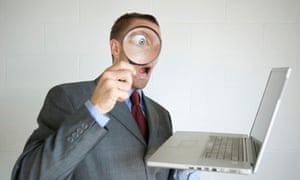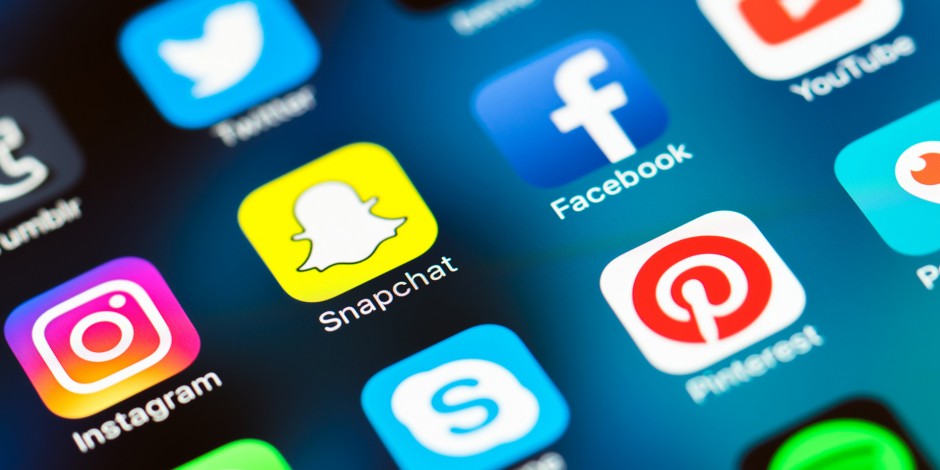Throughout the last 25 years, the internet changed without ceasing--both in how it operates and how people use it for information and to express their opinions. The internet has made questions and answers ten times easier to find just at our fingertips. Many people think that this has simplified our lives but what was it really like before the internet?
First, in the pre-internet era, people's actions were usually not so public and usually were not remembered for long. When Andy Yen spoke in his Ted Talk, he made a valid point that today's generation has been taught to post on social media. With such postings, our actions stick with us. Today, people have an enormous amount of personal information online. A lifetime of emails can tell where people have been, who they have been with, and even what we are thinkings about. Yen said, "Our data now last forever, so your data can and will outlive you." Before the internet, letters and phone calls were often the things that could deeply damage reputations. However, today, we have millions of apps and websites that keep important information for the foreseeable future.


Furthermore, not only are websites and apps following our every move, but the government is too. This kind of tracking leads to a loss of privacy. Catherine Crump said in her TED Talk that one of the key technologies allowing governments to watch their citizens is the automatic license plate reader. These readers can be found all over cities and even on police cars. These trackers keep an extensive amount of information on where your car goes, who you ride with, and your daily life every time you pass a license plate reader. Before the internet, the government could not even keep this information. The internet allows us to store information in a void of nothingness and recall it whenever someone needs it.

Finally, the internet has made it easier to attack people. Face-to-face conversations are scary for many people, especially difficult discussions. With the internet, people often respond without thinking, and they and can make their points quickly and cheaply. An Insider article by Mariel Loveland stated, "61% of teens preferred texting their friends, vide-chatting, or using social media over in-person conversation." With it being easier to talk online, the worldwide web can then be hell for some people. Cyberbullying is at an all-time high, and this can only occur on the internet. Darieth Chisolm talked about how 1 in 10 women under the age of 30 has experienced their explicit photos being shared online. This is a term Chisolm talked about called "revenge porn." Instantly, explicit photos can be shared all over the internet in just seconds. Before the internet, those photos would be lost or have limited circulation.
Congress passed the Whistleblower Protection Act of 1989 to protect federal whistleblowers who work for the government and report activities they believe constitutes a violation of federal laws or regulations. If a federal employee considers an action by another federal employee or officeholder is illegal or unethical, the Whistleblower Protection Act protects his or her identity. Some states have similar laws.
In 2020, a federal employee filed a complaint claiming that President Trump did something wrong in a July call with the leaders of Ukraine. This person claimed the protection of his or her identity under the Whistleblower Protection Act. As of now, this person has not been publicly identified, but the complaint put things in play that led to others giving testimony before Congress about Trump's actions regarding Ukraine.
 Another famous whistleblower is was Edward Snowden. He leaked highly classified files from the National Security Agency. He leaked information from the NSA that the United States was spying on us from our cell phones to the internet. However, Snowden did not seek protection under the Whistleblower Protection Act.
Another famous whistleblower is was Edward Snowden. He leaked highly classified files from the National Security Agency. He leaked information from the NSA that the United States was spying on us from our cell phones to the internet. However, Snowden did not seek protection under the Whistleblower Protection Act.
Sometimes the information from whistleblowers makes people afraid; other times it makes people angry. However, whistleblowers may provide information to the public that we can't get any other way.
Agenda-Setting Theory was first articulated in 1972 by UNC-Chapel Hill professors Dr. Maxwell McCombs and Dr. Donald Shaw. They published results from a survey that went out to North Carolina voters during the 1968 presidential election. The survey found that the issues of greatest importance to those North Carolina voters were the same ones that the media said were the most important.
These results were interpreted to mean two main things. First, the media shapes what voters think are the most important issues in political campaigns. Second, when the media covers some issues more than others, then those issues being covered rise to the top of the public's mind, whether they were there in the first place or not. Stated more broadly, the Agenda-Setting Theory was born on the idea that mass media plans or creates an atmosphere for what the public should care about.
The main problem with this theory is that it is hard to measure. There is already a funky relationship between the public and the media. With there being so many media sites, many people only choose one or two, (and use those to confirm what they already believe--that's confirmation bias) so it is hard to change their opinions or ideas.
There are three types of agenda-setting. Public agenda-setting occurs when the audience gets to choose the program for which stories are covered. Media agenda-setting is when the media chooses the topics for which stories are covered. Finally, the policy agenda-setting is where both the media and the public choose which stories to cover.

In recent years, agenda-setting has been changing because of the impact of social media. That is because social media allows many more people to express their wishes about issues that they want to be covered. It will be interesting to see the evolution of agenda-setting and this particular theory will be over the next ten years.
 My use of online presence is different from other people's, in my opinion. The only three platforms I generally use are Instagram, Snapchat, and YouTube. I wouldn't say I have a large online footprint, but I do have some footprint. I often try posting to make people smile. I rarely post on Instagram and like every photo in my feed. For Snapchat, I post every once in a while, but not an overwhelming number. For YouTube, I subscribe and never post anything. Information visitors would glean that I like music festivals.
My use of online presence is different from other people's, in my opinion. The only three platforms I generally use are Instagram, Snapchat, and YouTube. I wouldn't say I have a large online footprint, but I do have some footprint. I often try posting to make people smile. I rarely post on Instagram and like every photo in my feed. For Snapchat, I post every once in a while, but not an overwhelming number. For YouTube, I subscribe and never post anything. Information visitors would glean that I like music festivals.
Since I rarely post, it would be hard to learn much about me from my feed. Indirectly, a viewer would notice that I like every single photo in my feed because I always just give a like. Also, people looking at my footprint would see I only follow friends, family, and celebrities.
I try not to give out my phone number and email. However, all my social media sites ask for that information. I gave it to them because they wouldn't let me finish my profile without entering a phone number or email address.
In the end, I believe social media makes people lonely and depressed for several reasons. First, social media makes it easier to bully. People are usually afraid of face-to-face confrontation, so what's the best way to confront someone? Over the screen. It's gotten so out of hand that we have our own name for it, cyberbullying. The second reason why it makes people lonely and depressed is that social media makes it easier for people to miss out on things. If you don't get invited to a party or to dinner, social media makes it easier to find out you didn't get invited. Finally, social media makes it easier to compare yourself to others. Social media has created this image of an "ideal" man and women in today's generation, and if you don't have that physique, you're not "perfect."
Everett Rodgers published The Diffusion of Innovation in 1962. Rodgers theorized about how, why, and at what rate new technologies spread. My goal in this blogpost is to connect Facebook to Rodgers' diffusion of innovation theory.
Under Rodgers' theory, the "pioneer" or "innovator" phase would be the time when Facebook was meant only for Mark Zuckerberg's fellow students at Harvard. In this phase, the business wasn't even called Facebook; it was called Facemash. In these years, Zuckerberg developed the idea and created a prototype online.
Eventually, Zuckerberg hacked into Harvard's system, and he was forced to shut down Facemash. Zuckerberg next moved int go into what Rodgers called the "early adopters" phase. In 2004, "thefacebook," as Facebook was known then, spread to an audience of primarily college students at Stanford, Yale, and Columbia. These "early adopters" saw the value in Zuckerberg's invention, and they told their friends how cool thefacebook was. Zuckerberg's "business" grew mostly by word of mouth. Gradually, people at other colleges started using this new technology.
By September 2005, Facebook was in its "early majority" phase. The site quickly expanded to over 800 college campuses and started making an impact in the high school network. Also, Zuckerberg dropped the "the" so the site became simply "Facebook." This was the time when parents of students and people in older generations began using the website. Rodgers called people who began using the product during this phase the "late adopters."
At first, only the younger population was on Facebook (during the pioneer and early adopter phases). When the late adopters joined in, all the Facebook users would be called the "early majority" under Rodgers' theory, as Facebook grew rapidly around the world.
The final phase in the Diffusion of Innovation Theory occurs when the late joiners begin using the new product or services. Rodgers called these late joiners the "late adopters." This is where I would put myself in regard to Facebook. I never really wanted to use Facebook. I just needed a Facebook page for college. Since it seemed everyone else had one and had joined Facebook groups, I thought I would, too.
The final group, under Rodgers' theory" is called the "laggards." These are people who resist using new products, services, or technologies. Often, they never join in with others who were early or late adopters. Although my Dad uses a lot of technologies, he is a laggard when it comes to Facebook since he has never created a personal Facebook page.
Of the eight values of freedom of expression we discussed in class, I believe that promoting innovation is the most important one. If a government/society fully protects and values the freedom of speech, then people are more likely to be more creative and energized. This is because, for you to develop a growing and vibrant community, you need innovation.
According to McKinsey & Company, "84% of executives say that their future success is dependent in innovation." Innovation is creating and implementing a new idea that can increase standards of living and opportunities. Change can lead to more significant opportunities by penetrating markets faster and connecting to developing markets more easily.
How would limits on speech and expression affect innovation today? First, people would be more afraid to put their words and ideas out into the world and marketplace. Limiting speech generates fear, and fear is the enemy of innovation. Second, people would be intimidated to spread the words and ideas they encounter in societies that limit expression and speech. New and sometimes controversial ideas and proposals need books, movies, films, and the internet to spread from creators to pioneers to early adopters under the Theory of Diffusion of Innovation.
With the freedom of speech we have here in America, we can innovate like no other country. The Pew Reseach Center surveyed 38 countries around the world to see which country had the biggest right to freedom of speech. In 2015 at the end of the survey, Pew Research found that "Americans are more tolerant of free speech than other nationalities." That is why I believe America is one of the most innovative countries ion the world.
One of the most interesting presentations from the EOTO projects was the history of the emoji. I had never thought about how the emoji has gotten to be the emoji of today.
The first emoji was sent in 1982 by Scott Fahlman. Mr. Fahlman used his creativity to combine the parenthesis with the colon to create :) to symbolize happiness and send it via email.
This move to expand emojis continued later with Japanese designer Shigitaka Kurita. In 1999, Kurita wanted an easier way to communicate, so he used visuals to create the first emoticon keyboard. Kurita is considered to be the "father of emojis."
Emojis picked up again in 2009 when Apple engineers Yasu Kida and Peter Edberg created the 625 emojis for Apple. Apple then wanted its own keyboard so, in 2011, it added an official keyboard to its phones. Over the past eight years, Apple has steadily been adding more and more emojis, from the gay pride flag to including many more races and ethnicities.
Eventually, Fred Benenson translated the whole Moby Dick book to Emoji Dick. Also, the Museum of Modern Art in New York City holds the original emoji collection.

Today, almost everyone knows what an emoji is. Many businesses are using them to connect with their customers. Who knows what new emojis we will have in the future? The only limit is our imagination.








